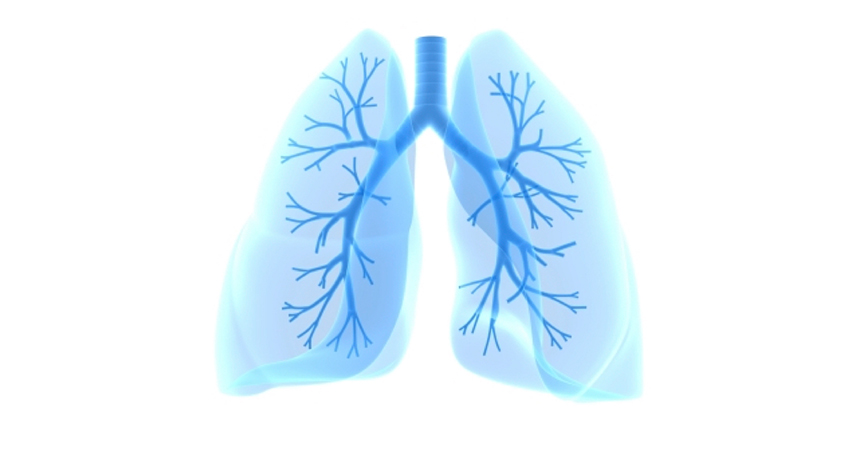Artificial Intelligence System Spots Lung Cancer Before Radiologists
Google and Northwestern scientists show precision of new deep learning system to predict lung cancer
Deep learning — a form of artificial intelligence — was able to detect malignant lung nodules on low-dose chest computed tomography (LDCT) scans with a performance meeting or exceeding that of expert radiologists, reports a new study from Google and Northwestern Medicine.
This deep-learning system provides an automated image evaluation system to enhance the accuracy of early lung cancer diagnosis that could lead to earlier treatment. The deep-learning system was compared against radiologists on LDCTs for patients, some of whom had biopsy confirmed cancer within a year. In most comparisons, the model performed at or better than radiologists.
Deep learning is a technique that teaches computers to learn by example.
The deep-learning system also produced fewer false positives and fewer false negatives, which could lead to fewer unnecessary follow-up procedures and fewer missed tumors, if it were used in a clinical setting.
The paper was published in Nature Medicine May 20.
“Radiologists generally examine hundreds of two-dimensional images or ‘slices’ in a single CT scan, but this new machine learning system views the lungs in a huge, single three-dimensional image,” said study co-author Mozziyar Etemadi, a research assistant professor of anesthesiology at Northwestern University's Feinberg School of Medicine and of biomedical engineering at Northwestern Engineering. “AI in 3D can be much more sensitive in its ability to detect early lung cancer than the human eye looking at 2-D images. This is technically ‘4D' because it is not only looking at one CT scan, but two (the current and prior scan) over time.
“In order to build the AI to view the CTs in this way, you require an enormous computer system of Google-scale. The concept is novel but the actual engineering of it is also novel because of the scale."
Etemadi leads his research team while also in anesthesiology residency training at Northwestern as part of a unique residency research track.
Etemadi’s dual roles allow research in his lab to traverse the technological and communications boundaries between healthcare and engineering. His lab is based inside one of the intensive care units at Northwestern Memorial Hospital to allow seamless communication among engineers and nurses, physicians, and other care providers.
"This area of research is incredibly important, as lung cancer has the highest rate of mortality among all cancers, and there are many challenges in the way of broad adoption of lung cancer screening,” said Shravya Shetty, technical lead at Google. “Our work examines ways AI can be used to improve the accuracy and optimize the screening process, in ways that could help with the implementation of screening programs. The results are promising, and we look forward to continuing our work with partners and peers."
Lung cancer is the most common cause of cancer-related death in the United States, resulting in an estimated 160,000 deaths in 2018. Large clinical trials across the United States and Europe have shown that chest screening can identify the cancer and reduce death rates. However, high error rates and the limited access to these screenings mean that many lung cancers are usually detected at advanced stages, when they are hard to treat.
The deep-learning system utilizes both the primary CT scan and, whenever available, a prior CT scan from the patient as input. Prior CT scans are useful in predicting lung cancer malignancy risk because the growth rate of suspicious lung nodules can be indicative of malignancy. The computer was trained using fully de-identified, biopsy-confirmed low-dose chest CT scans.
The novel system identifies both a region of interest and whether the region has a high likelihood of lung cancer.
The model outperformed six radiologists when previous CT imaging was not available and performed as well as the radiologists when there was prior imaging.
“The system can categorize a lesion with more specificity. Not only can we better diagnose someone with cancer, we can also say if someone doesn’t have cancer, potentially saving them from an invasive, costly and risky lung biopsy,” Etemadi said.
Google scientists developed the deep-learning model and applied it to 2,763 de-identified CT scan sets provided by Northwestern Medicine to validate the accuracy of its new system. The scientists found the artificial-intelligence-powered system was able to spot sometimes-minuscule malignant lung nodules with a model AUC of 0.94 test cases. The cases were pulled from the Northwestern Electronic Data Warehouse as well as other Northwestern Medicine data sources, as a result of complex, highly customized software engineered by Etemadi’s team.
“Most of the software we use as clinicians is designed for patient care, not for research,” Etemadi said. “It took over a year of dedicated effort by my entire team to extract and prepare data to help with this exciting project. The ability to collaborate with world-class scientists at Google, using their unprecedented computing capabilities to create something with the potential to save tens of thousands of lives a year is truly a privilege.”
The authors caution that these findings need to be clinically validated in large patient populations, but they say this model may assist in improving the management and outcome of patients with lung cancer.
The corresponding author on the paper is Daniel Tse, Google product manager.
